A long and difficult Citizen Science pathway: PTO (Paratympanic organ of Vitali) and Migration of the Wood Pigeon, from “Applied Research” on field (evidence-based data) to the great target of the “Pure Research” – WRJ vol.1, august 2024
Cavina Enrico*, Lipparelli Tommaso, Feligetti Vasco, Bianchi Denis
* https://independent.academia.edu/enricocavina
Titolo in italiano: Un percorso Citizen Science lungo e difficile: PTO e Migrazione del Colombaccio, dalla “Ricerca applicata” sul campo (evidence-based data) al grande obiettivo della “Ricerca pura”
Usare TRADUTTORE automatico
Citation: Cavina E., Lipparelli T. et alt. (2024) – A long and difficult Citizen Science journey: PTO and Migration of the Wood Pigeon, from “Applied Research” on field (evidence-based data) to the great target of the “Pure Research” – WRJ vol.1, august 2024
Key-words: PTO, Bibliography, Web-references, Air Pressure changes, mass movements, migration monitoring, database, evidence-based data, ultrastructural investigations.
The writing architecture of the present paper is built for on-line reading
Abstract
ITA: Questo Paper ripercorre il lungo cammino oltre decennale con il quale abbiamo cercato di accumulare dati ed elementi documentali utili a trasferire ipotesi scientifiche sulla funzione barometrica del PTO direttamente nel comportamento migratorio di Uccelli selvatici. Tutto parte dalla registrazione occasionale di un rapporto diretto tra salto della Pressione Atmosferica e momento decisionale degli involi di massa coincidenti con picchi migratori della Specie: Columba palumbus.
Infatti, la grande quantità di Links si pone come base documentativa “evidence-based”, tratta dal monitoraggio pluridecennale dei Colombacci che migrano in Italia.
Il percorso di Ricerca che viene analizzato si sviluppa quindi sui risultati concreti di “Ricerca applicata” sino alle suggerite investigazioni di “Ricerca pura” capace di sviscerare i segreti più intimi della funzione barometrica del PTO anche in termini di “elettro-neuro-fisico-chimico-fisiologia” di tutto il sistema eco-sensitivo degli Uccelli e sua base istologica ultrastrutturale finalizzata ad identificare nel PTO i sensori (cellule cigliate) della forza fisica della Pressione Atmosferica.
Noi Citizen Scientists porgiamo alla Scienza ufficiale elementi utili a “Clarification of the functional role of the PTO, which is used daily by an enormous number of living animals (200–300 billion of birds), represents currently one of the major unsolved mysteries and challenges in sensory physiology of vertebrates” (Giannessi F.).
ENG: This Paper retraces the long journey over ten years with which we have tried to accumulate data and documentary elements useful to transfer scientific hypotheses on the barometric function of the PTO directly into the migratory behavior of wild birds. Everything starts from the occasional recording of a direct relationship between the jump in Atmospheric Pressure and the decision-making moment of mass flights coinciding with migratory peaks of the Species Columba palumbus. The writing architecture of the present paper is built for on-line reading. In fact, the large number of Links is presented as an “evidence based” documentary basis. taken from the decades-long monitoring of Wood Pigeons that migrate in Italy. The Research path that is analyzed is therefore developed on the concrete results of “Applied Research” up to the suggested investigations of “Pure Research” capable of dissecting the most intimate secrets of the barometric function of the PTO also in terms of “electro-neuro-physical-chemical-physiology” of the entire eco-sensitive system of Birds and its ultrastructural histological basis aimed at identifying in the PTO the sensors (hair cells) of the physical force of Atmospheric Pressure. We Citizen Scientists offer official Science useful elements for “Clarification of the functional role of the PTO, which is used daily by an enormous number of living animals (200–300 billion of birds), currently represents one of the major unsolved mysteries and challenges in sensory physiology of vertebrates”.
Introduction
The Paratympanic Organ of Vitali (PTO) is a sensitive organ localized (G. Vitali, 1911) in the middle ear of birds, close and linked with Tympanus, and its function must be considered in the “sensitive Ecology” of animals.
The PTO’s function is likely to have been modified in birds for detecting air pressure during flight.
Clare Baker –https://www.cam.ac.uk/research/news/natural-barometer-in-birds-evolved-from-ancient-fish-sense-organ
O’Neill, P., Mak, SS., Fritzsch, B. et al. The amniote paratympanic organ develops from a previously undiscovered sensory placode. Nat Commun 3, 1041 (2012). https://doi.org/10.1038/ncomms2036
O’Neill P.: “Latest research shows that the ‘paratympanic organ’ (PTO) – the innate barometer in the middle ear of birds – evolved from a fish sense organ that detects jaw
The ‘spiracular organ’ found in cartilaginous fishes (sharks and rays) and some bony fishes (including gars, sturgeons and lungfishes) is structurally similar to a bird’s PTO and located in the same position within the head, that is, in the wall of the ‘spiracle’ – the first gill slit – from which the middle ear cavity of all land vertebrates evolved.
Both organs contain motion-detecting hair cells, like those in the human inner ear used for hearing and balance. Ear drum movements in birds, and jaw movements in fish, respectively distort the PTO and spiracular organ, triggering the hair cells.
It has been proposed that birds use the PTO to detect air pressure, assisting with rapid changes in altitude. The organ is most complex in fast flyers such as swifts.
By combining gene expression with fate-mapping techniques in chicken embryos, scientists have been able to determine that the PTO stems from a unique ‘placode’ whose existence in birds had not previously been suspected. Placodes are specialized patches of thickened embryonic skin from which sense organs develop.
The avian PTO was first described in 1911 by Giovanni Vitali at the University of Siena. After initial excitement, which led to Vitali being nominated for the 1934 Nobel Prize in Physiology or Medicine, its existence was largely forgotten or ignored. It’s still 2024 forgotten or ignored by the official Research studies from Institutions (Universities, Research Centers, etc.)
The full story of the item was published by Giannessi F.e CoAutori nel 2013: Giovanni Vitali: Discoverer of the Paratympanic Organ – Annals of Anatomy 195(1)5-19, Feb.2013 https://europepmc.org/backend/ptpmcrender.fcgi?accid=PMC3905790&blobtype=pdf full text available
The Authors concluded this paper:
“Recently, we reviewed the literature and evidence that suggests that the PTO may function as a barometer and/or altimeter in the middle ear of birds (von Bartheld and Giannessi, 2011). Indeed, birds are sensitive to small changes in atmospheric pressure of 10–20 mm H2O (Griffin, 1969; Kreithen and Keeton, 1974). The PTO may sense the tension of the tympanic membrane, and thereby register differences in air pressure. Clarification of the functional role of the PTO, which is used daily by an enormous number of living animals (200–300 billion of birds), represents currently one of the major unsolved mysteries and challenges in sensory physiology of vertebrates.”
The message and invitation to study the PTO “the major unsolved mysteries and challenges in sensory physiology of vertebrates. “So strong and documented in 2013 came from the University School of Pisa where Vitali had continued his studies until his death (born in 1876 and died in Pisa in 1963.)
From 1911 (first publication on the PTO that Vitali had defined as the Organ of Flight) to the whole of 2013 (including O’Neil’s 2012 paper ) numerous properly institutional School Works have followed one another (see Bibliography in https://www.academia.edu/49957294/The_Organ_of_flight_Paratympanic_Organ_PTO_of_Vitali_in_Wild_Birds_as_Biological_Barometer_Altimeter – 2021
In fact, for a whole Century, official Institutional Research has not been able to document and deepen the proper function of the PTO as a true Barometer and Biological altimeter, this even without examining the existence and function of the organ in the wild avifauna, where the wild habitat and the atmosphere that overlies it more necessarily require for the birds – which move in the atmosphere – a sensitive ecosystem (barometric sense and other abiotic and biotic factors ) such as to modulate behaviors and movements (migratory flight) in an optimal manner.
We are stopped with the comment (2012) of O’Neill about PTO “its existence was largely forgotten or ignored”.
Probably we can hazard to say that the second step of the “research on PTO pathway” starts by our casual observations and reports officially published on-line and focus on wild birds (Columba palumbus).
“Decision making of autumn migrations of woodpigeons (Columba palumbus) in Europe: analysis of the abiotic factors and atmospheric pressure changes.” published online: Science Heresy, November 2014
At present time 2024 Science Heresy was no more available online
It was a specific Citizen Science research and paper, and a clear message started from Citizen Science to the Science.
Our adventure started with the opportunity to analyze the data from a database collected by a pioneer of the Woodpigeon Research, Rinaldo Bucchi (member Research Gate) who starting from 1996 involved members of the Federation “Club Italiano del Colombaccio” to record their observations (1997-2007) on the field during the autumn migration of the Woodpigeons in Italy.
A scientific analysis of this experience was published “The General Pattern of Seasonal Dynamics of The Autumn Migration of The Wood Pigeon Columba palumbus in Italy – The Ring, 2018, № 1, p. 3-18 – supported by the authority of Prof. P. Busse (University of Gdansk, Polland)
https://sciendo.com/downloadpdf/journals/ring/40/1/article-p3.pdf
Starting from 1996 the discussion and analysis on the migration phenology in Italy is too large to be reported here. The Association CIC produced a Journal https://journal.ilcolombaccio.it/ which published 45 papers in 6 years and a selection on the migration peaks and waves was a base to analyze abiotic factors and their influence on the decision making to migrate by massive takeoffs .
The first paper (material 2014) remains basic to understand the importance of the relationship between migration decision making and Air Pressure changes. The comparative analysis between Italy and archives fron France and Sweden confirms this importance
Decision making of autumn migrations of woodpigeons (Columba palumbus) in Europe: analysis of the abiotic factors and atmospheric pressure changes.”
Science Heresy, November 2014
From this our paper we report original texts by Abstract, Material methods, Conclusion and evidence-based data/links
ABSTRACT (of the Paper 2014 on Science Heresy)
NOVEMBER 2014
In this detailed paper we have tried to detect all the possible abiotic data on three areas of transit of woodpigeons (Columba palumbus) on autumn migration (Falsterbo, Sweden – French Pyrenees – Apennines mountains and valleys of Italy), processing and reporting of their data.
Our focus was to identify the main abiotic factor related to the weather that can be defined as the proximate cause or “finger-pressing-the-button” for the take-off flights of the autumn migration from nesting areas near both transit areas. The analysis was conducted on census data in transit, in the Archives of various institutions. The total quantity of birds counted in migration over 40 years (from 1973 to 2014) was 42,936,667. Over the past 15 years (1999-2013) 47 peak days-of- migration were identified in Sweden, 42 peaks in the Pyrenees and 12 in Italy, i.e. 101 peaks in total. These peaks were compared with the weather conditions recorded day by day and hour by hour and detailed in the Archives of Weather History. The analysis carried out mainly with data rates of incidence of abiotic factors has revealed that the most likely finger-pressing-the-button can be identified as rising of the atmospheric pressure at all three sits (92.62% Sweden, 92.85% in the Pyrenees and 91,00% in Italy). Variations above 10 hPa in 75.80% of the peaks for the sector “36/24 h” and 76.19% for the sector “18 h” preceding the take-off. The global analysis of all the abiotic factors makes it possible to construct a number of hypotheses for the interpretation of the “why” this happens. The sensory input which detects these variations of atmospheric pressure is identified as the Para-Tympanic Organ of Vitali, a possible “biological” barometer.
MATERIALS AND METHOD (of the Paper 2014 on Science Heresy)
The global base of study concerns the migration of a multi-year total (Sweden – Pyrenees) of 38,105,479 Woodpigeons (Columba palumbus) [44] surveyed in transit migration in 40 years (1973 to 2013) and 4,831,138 (10 years) in Italy.
The specific basis of retrospective study concerns the migration of 42,936,667 Woodpigeons in the last 15 years (1999-2013) surveyed in transit at Falsterbo-Sweden (10,760,141 with an annual average 341,576) and on the passes of the Pyrenees-France (27,345,338 with annual average 1,823,022) and Apennines mountains-valleys-Italy (4,831,138 with annual average 483,138 in ten years 1998-2007).
The average annual global (Sweden + France) transit’s census in 15 years is 2,164,598 birds, which – compared with the census (Birdlife.org 2014) 27,000,000-51,000,000 of woodpigeons breeding in Europe – is respectively ‘s 8.01% (about 27 million) and 4.24% (about 51 million) of all Woodpigeons in Europe.
It was possible to relate these 15-year period/ 10-year period, corresponding to the period of 15 years for which Weather History provides all the weather data and astronomical day by day and hour by hour since 1998. Realizing in paper some card-models useful to compare the data both ornithological and concerning the weather, we were able to evaluate different abiotic factors that affect the decision-making moment of take-off during the migrations, so we have considered in the autumn-takeoff from nesting areas (Sweden, Scandinavia, North-eastern Russia) and then by the total area of the stop-over prior to transiting the Pyrenees in France. [01-02-03], and the Russia- Central Europe-Balkans total areas (long-medium-short distance) of stop-over prior to transiting In Italy
ALL THE GRAPHICS available at
https://plus.google.com/photos/103942035281038458760/albums/6086432829554328737. Not always available
FALSTERBO (Sweden) 1999- 2013: 47 peaks [01]
-1999 (148.360) two peaks: 6-7-8 Oct. 34.643 / 12-13-14 Oct. 43.885
-2000 (333.125) three peaks: 15-16-17 Oct. 40.540/ 27-28 Oct. 54.300/ 2-3-4 Nov.117.248
-2001 (208.815) three peaks: 6-7 Oct. 37.600/11-12-13 Oct. 38.240/17-18-19 Oct. 79445
–2002 (263.351) four peaks:6-7-8 Oct.46.800/10-11-12 Oct.44.400/20-21 Oct.60.900/29-30-31 Oct. 40.300
-2003 (144.496) one peak: 12-13-14 Oct. 69.800
-2004 (249.560) four peaks: 9-10-11 Oct. 36.350/19-20 Oct. 38.760/27 Oct.43.950/2 Nov. 56800
– 2005 (421.710 three peaks:11-12-13 Oct. 106.000/15-16 Oct. 165.900/23-24-25-26 Oct.69.135
– 2006 (429.827) three peaks:13-14-15-16 Oct.218.460/25-26 Oct.84.800/2 Nov.31.100
-2007 (254.286) three peaks: 4-5-6 Oct.47.130/13 Oct. 71.360/ 19-20 62.070
-2008 (407.702) four peaks:7-9 Oct.78.030/15-16-17-18 Oct.138.535/24-25 Oct. 70.40 / 29-30 Oct.55.650
–2009 (314.615) three peaks: 9-10 Oct.61.150/13-14-15 Oct.120.650/27-28-29 Oct.44.800
-2010 (258.582) three peaks: 28-29-30 Sept.1 Oct. 67.500/9-10-11 Oct. 79.700/15-16-17-18 Oct.59.600
-2011 (355.655) three peaks: 8-9 Oct.156.300/13-14 Oct.105.500/21 Oct.25.600
-2012 (491.833) two peaks: 10-11-12 Oct. 204.600/19-20-21 Oct. 198.990 -2013 (844.710) five peaks: 11-12 Oct. 450.800 *** / 15-16-17-18 Oct.103.990 / 25 Oct. 43.200/31 Oct.30.500/5-6-7 Nov. 95.000 Tot.: 47 peaks 3.972.053 birds – average 84.511
In the period 1973-2013 (40 years) in Falsterbo (Sweden) have passed 10,760,141 Woodpigeons as documented, with an annual average applied (over 40 years) of 262 459 birds.[01]
In the period 1999-2013 applied (last 15 years) have passed 5,123,647 Woodpigeons – which represents 43.01% of the total of 40 years – with an annual average of 15 years of 341 576 birds, as equivalent to an increase of 54 50% compared to the average applied (262 459 birds) of the 40 years in total.
PYRENEES (France) 1999 – 2013 42 peaks [02]
-1999 (2 787 626) three peaks:16 Oct. 108.197/26-27 Oct. 1.907.721 ***/4 Nov. 358.794
-2000 (1 556 987) three peaks :18-19-20 Oct. 434.891/ 23-24-25 Oct. 689.783/27-28 Oct.381.373
-2001 (828 783) three peaks: 16 Oct.223.442/24-25-26-27 Oct.675.391/2-3 Nov.300.870
-2002 (2 052 461) three peaks:19-20 Oct. 237.723/27-28-29 Oct.759.472/5-6 Nov.485.769
-2003 (1 624 152) three peaks: 22 Oct.56.050/25 Oct. 274.100/ 3 Nov. 1.009.490
-2004 (1 820 180) three peaks: 22-23 Oct. 353.168/30-31 Oct. 584.070/ 3 Nov. 130.692
-2005 (2 477 468) three peaks: 17 Oct.114.122/24-25-26-27 Oct.1.037.592/30-31 Oct. 1-2-3 Nov. 1.101.595
-2006 (1 520 491) two peaks: 25-26-27-28 Oct. 799.537/2-3 -4 Nov.563.868
-2007 (1 643 274) three peaks:19-20-21-22 Oct. 657.146/27-28 Oct. 416.226/6-7-8 Nov. 242.727
-2008 (2 208 369) three peaks :17-18-19 Oct. 1.439.480/23-24-25-26 Oct.727.626/4 Nov.205.195
-2009 (1 310 538) two peaks : 18-19 Oct.88.479/26-27-28-29-30 Oct 1.108.525
-2010 (1 028 000) two peaks: 21-22 Oct. 508.539 / 26-27 Oct.307.565
-2011 (1 440 469) three peaks:21-22 Oct. 315.616/31 Oct.606.878/9-10-11 Nov. 390.316
-2012 (2 449 624) three peaks :18 Oct. 158.069/28-29-30-31 Oct. 827 050/7-8 Nov.663.115 -2013 (1 596 896) two peaks: 30-31 Oct. 1.367.464 / 7 Nov. 94.832
Tot. 42 peaks 22.444.226 – average 534.386
In the period 1973-2013 (40 years) in Falsterbo (Sweden) have passed 10,760,141 Woodpigeons as documented, with an annual average applied (over 40 years) of 262 459 birds.[01]
In the period 1999-2013 applied (last 15 years) have passed 5,123,647 Woodpigeons – which represents 43.01% of the total of 40 years – with an annual average of 15 years of 341 576 birds, as equivalent to an increase of 54 50% compared to the average applied (262 459 birds) of the 40 years in total.
In the 15 years we have extrapolated 42 peaks (min.1g – max 5 days) migration for a total of 22,444,226 birds (average for peak 1: 534 386 birds) The records of maximum values are in 1999 with 2,374,712 birds, and the negative minimum with 816 101 birds in 2010. The record of the main peak was 26 to 27 October 1999 (2 days) with 1.172 million birds, which accounted for 73.39% of the whole year 1999.
ITALY 1998-2007 12 peaks [93]
-1998 – -1999 –
15 October (8 days)
-2000 – -2001 – -2002 – -2003 – -2004 – -2005 – -2006 – -2007 –
14 October (8 days) 11 October (5 days) 20 October (2 days) 16 October (2 days) 19 October (2 days) 12 October (6 days) 26 October (3 days) 4 November (3 days) 15 October (2 days)
27 October (2 days) – 8 November (4 days)
In November the Migration is at the end in Italy: we have considered only two significant peaks over 10.
CONCLUSIONS (of the Paper 2014 on Science Heresy)
If you want to compare the data obtained in Sweden (area of first take-off) and France (take-off area after stop) and Italy ( transit area after stop-over ) prevails in a substantially similar effect (numerical and statistical) about the abiotic factors that may have influenced the decision of the take –off : no significant differences between the three areas about almost all factors considered (see Tables A and B and C and GRAPHICS )
As for the raising or “overhang” of the atmospheric pressure in the hours (36h / 24 / 18h) prior to the take-off, this increase is still a constant (Sweden 92.62% – 92.85% France) before a true peak migration and quantification of differences can only detect a higher percentage of increase in the hours further away (48-24 h) prior to take-off in France (73.80%) than in Sweden where at this time the remote ‘incidence is only 27.65%, while in the two areas in the “18h” before takeoff , the incidence is 78.72% (Sweden) and 76.19% (France). Always interpreted in absolute terms of hypothesis would be the following: raising stimulates the take-off more powerfully and more quickly acclimated birds in a long time in the nest, while the stimulus is more long-term (1-2 days. before) the birds that have long been in migration and stop-over [86]. A regardless of this interpretation and assumptions, it is important to note that the increase is constant over 90% in the peak mass migration. [7-34-61]
The set of data – here in the form of simple raw numbers and percentages not elaborated in strictly statistical, and then ultimately understandable – suggests the desirability and / or the possibility of in-depth analysis designed to identify integrations (day a day / hour an hour) with other abiotic and biological factors (as algorithms, equations, formulas, statistics, mathematical indices of analysis and / or forecast) [32-51-66].
The extension of this method of analysis (ornithology – meteorology) to other areas of nesting and transit (possibly in the spring) may provide additional contributions to the understanding of the phenomenon of migration, deepening the analysis in climatological terms, so now present seasonal changes in the increasingly looming and influential on the environment. [69]
Verification “live” directly in the field in 2014, about migration in Europe and particularly in Italy – as expressed in the “Updating spatial and temporal Research” – gave full confirmation of the results obtained with the global search retroactive.
Finally, we emphasize that the sensor terminal of the changes in atmospheric pressure
can be easily detected –first time also in wild birds – in the organ Para-Tympanic (PTO) Vitali [20-21) studied by Vitali in Italy in the early decades of the last century, still the subject of extensive research morphological and functional [19- 24]: if “the finger pressing” can be discerned in the changes of atmospheric pressure (the “overhang”), “click” on which the press is probably the Paratympanic organ of Vitali, having to consider all the neuro-functional integration with the adjacent structures in the inner ear (Lagena, vestibular apparatus) until the centers of the Brain and Cerebellum.
To explain all that we have shown in this retrospective study is essential that there is a definite anatomical basis barometer understood as “organic”. [83-84-87]
This is the large, documented Material (evidence-based data) collected 10 years ago, here fully reported.
During these last ten years the methodology of monitoring migration and peaks evolved by selective monitoring (MCL – database collected by Vasco Feligetti) and an exhaustive paper is the Universitary Thesis (Tommaso Lipparelli, 2023) as by following very important link rich of graphics concerning “peaks/air pressure”.
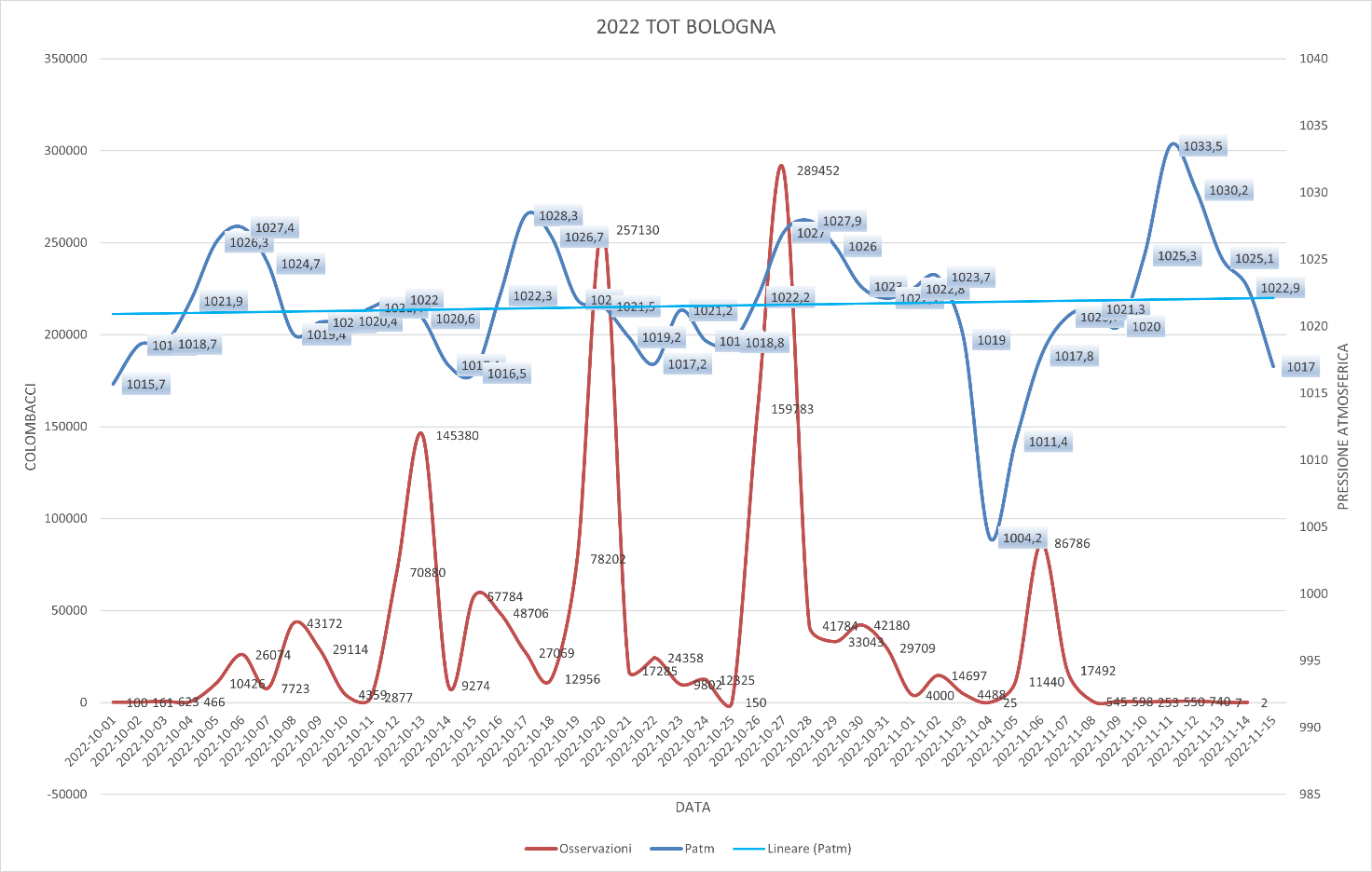

Probably the most impressive documentation of the relationship Air Pressure / Migration is a series of video-clips collected in many years by Denis Bianchi in the Mesola Adriatic area. The paper “WOODPIGEONS MIGRATION TAKE-OFFS Italy 2017-2023 by Denis Bianchi
Woodpigeon’s (Columba palumbus) autumn migration: biological barometer (PTO) and mass-takeoffs “Images-evidence-based” document.
https://journal.ilcolombaccio.it/woodpigeons-migration-take-offs-italy-2017-2023-by-denis-bianchi/
is the best document recorded on field. (*****)
https://www.youtube.com/watch?v=RntDJjtR0to
All the events were predicted.
The dicussion/conclusion of this paper are here:
“All the images recorded in the sequence clips show the sinuous simultaneous take-offs of numerous flocks that take off from the Mesola forest and surrounding lands, taking off to conquer an isobaric altimetric corridor useful for crossing the Apennine mountains.
After take-offs, birds can remain in large flocks, continuing to fly in long strips or gradually separating into various flocks (“flocking”).All the video clips demonstrate the relationship of take-offs with the changes in air pressure 12-48 hours before, especially during the night. Probably – but we will not analyze it yet – other abiotic factors (wind strength and direction, temperature, humidity, visibility, lunar phases, altimetric differences) participate in the take-off decision. We have also reported a comparison of the days of each individual season with the total graphs that represent daily for each year the intensity of migration in the entire region, therefore with a different significance compared to the data of the individual take-offs from Mesola.
This short article is only indicative with respect to mass take-offs at stopover sites, but many similar results can be compared with other foreign archives such as Falsterbo and Pyrenees and Port Land.The retroactive demonstration of the relationship between Migrations-take-offs and strong increase in atmospheric pressure seems absolutely true in our work. A better study of the PTO remains open to research. https://www.youtube.com/watch?v=RntDJjtR0to
Other unequivocally documentary elements can be verified in other databases as reported (focus on migratory peaks in various regional areas and also in detailed migratory corridors located in multiform orographic realities) in numerous of our Works as present in the bibliography. Here we also cite the database (Vasco Feligetti) built on over a thousand wing feathers offered to research with Isotopes guided by Hobson (Jackson Kusack – Enrico Cavina – Vasco Feligetti – Keith A. Hobson. -Statistical survey on the “origins” of the common wood pigeon during the transit-migration of autumn 2021 in Italy: 550 birds examined by the stable hydrogen isotope in the plumage – PRELIMINARY REPORT – IJWR –Vol.2023 – 21 June 2023. REVIEW https://www.palombe.it/articoli/2024/07/rassegna-reviews-luglio-2024
in order to have indirect indications on the Origins of migrant Wood Pigeons in Italy: the timing of these observations allows us to identify migratory peaks and weather correlations.
If this has been an important and continuous work of monitoring and recording of observations “in the field”, the investigative pathway has been equally persevering and useful to dissect all the elements useful to confirm also in wild birds the supposed function of biological barometer of the PTO.
Our monitoring methods in the two decades up to today have evolved with documentary results always confirming a precise causal relationship between “increase in atmospheric pressure and intensity of the migratory stimulus”,
This continuous work of monitoring and analysis is attested by the numerous Works published in the Italian Journal Woodpigeons Research of the CIC (see Links at the bottom) and we refer the Reader to these for always very detailed insights.
We also want to underline that the eco sensitive relationship “barometric sense / migratory response” can be further explored by considering temporal relationships with other abiotic factors and their environmental timing: temperature, variation in direction and strength of the winds, humidity, visibility, isobaric stratification, cloudiness, photoperiod, lunar phases. But other correlations with biotic factors should also be explored: moulting status, hormonal and metabolic status, energy accumulation, olfactory status, age, parasitosis, population differentiation, orographic memory, availability to fly at night, anthropic disturbance. Ultimately, we could affirm that if the determining factor of migratory “decision making” is identifiable in the P.A. swing, this does not take away the fact that the sensorial ecosystem certainly also acts in dependence on other more or less intense and concomitant factors.
The field of Research that opens to completely innovative study in-depth studies is a very vast field and offers very stimulating study opportunities. This is the key point that inevitably leads our path towards “Pure Research” where the start and development requires institutional and specialized locations that can develop complex studies and necessarily supported by highly specialized instruments and methods capable of responding to “Clarification of the functional role of the PTO, which is used daily by an enormous number of living animals (200–300 billion of birds), currently represents one of the major unsolved mysteries and challenges in sensory physiology of vertebrates.” (Giannessi F. 2013).
And surprisingly in 2023 a Work is published capable of demonstrating in the field the validity of Giovanni Vitali’s intuition (1911) and collaterally also our modest Citizen Science acquisitions with which we transferred the suppositions of barometric function on wild avifauna (2014) explosive in its migratory phenology and documented mass phenomenology.
Of this Work that is a valid scientific “bridge” between Field Research and Pure Research we report a summary as published by one of us (Lipparelli Tommaso, 2023)
On the Reviews of www.palombe.it (section: Ricerca Scientifica) we have a summary.
“https://www.palombe.it/articoli/2024/07/rassegna-reviews-luglio-2024
NW Cooper et al.
«Atmospheric pressure predicts probability of departure for migratory songbirds»
Movement Ecology, vol. 11, fasci. 1, p. 23, May. 2023, DOI: 10.1186/s40462-022-00356-
This important work is represented (2023) as a “milestone” in research relating to Vitali’s Paratympanic Organ or so-called “biological barometer-altimeter” which we have been dealing with since 2014, highlighting an unacceptable lack of multidisciplinary scientific insights such as highlighted by us in international literature (Cavina, E. (2021). The “Organ of fight”: Paratympanic Organ (PTO) of Vitali in Wild Birds as Biological Barometer-Altimeter.” Academia Letters, Article 1613. https://doi .org/10.20935/AL1613.) where we have reported the entire bibliography which in fact denounces an incredible lack of scientific commitment for an organ that functions every day in billions of “animal beings”. Our contribution to knowledge started from the observation in nature (2014) of mass fledgings from simultaneous stop-overs for hundreds of thousands of wood pigeons (Columba palumbus) 12-24 hours after a strong rise in atmospheric pressure. Based on these annual observations, a “Forecasting” method was developed (forecasted PA increases) which was always found to be reliable as in the impeccable visual documentation (video) reported in:
Bianchi Denis, Cavina Enrico, Feligetti Vasco**, Lipparelli Tommaso (2023). “Woodpigeon’s (Columba palumbus) autumn migration: biological barometer (PTO) and mass-take-offs” Images-evidence-based “ document- IJWR dec.2023 – https://journal.ilcolombaccio.it/woodpigeons-migration-take- offs-italy-2017-2023-by-denis-bianchi/
And here we are finally (2023) at the Work of NWCooper et al. (Movement Ecology, vol. 11, fasc. 1, p. 23,) based on satellite monitoring of the migration of 4 species of songbirds in North America and correlations with “abiotic factors” (temperature, wind, PA, precipitation, cloud cover). According to the Authors, “the species have developed behavioral adaptations to respond to meteorological conditions in 5 breeding and wintering sites. Weather conditions have long been hypothesized to influence the timing and intensity of bird migration, and radar studies have demonstrated strong correlations between weather conditions and large-scale migration patterns. How weather conditions influence individual decisions about initiating migratory flights, particularly at the onset of migration, remains uncertain.”
The field research method was developed by comparing the data collected by telemetry with meteorological data (abiotoc factors on exposures). The “evidence based” results induced a focus of analysis on the changes in BP (Pa) related to the timing and intensity of migration. This research focus seems to have been achieved in the complete absence of consideration of a barometric sensitive capacity in a specific organ.
In fact, there is no reference to the PTO in the Bibliography: if this can be considered a lack of research, at the same time the results unequivocally confirm the existence of an organic eco-system involved in migratory decisions and behaviour. It therefore confirms that it occurs in the absence of anatomical-physiological hypotheses.
All the work carried out with complex methodology in Telemetry reaches conclusions after equally complex statistical analysis methodology:
“Our findings suggest that individual birds actively use weather information to inform decision making regarding the initiation of departure from breeding and wintering grounds. The choice of the Job Title enhances the validity of the Migration forecasting method”
“Atmospheric pressure predicts probability of departure for migratory songbirds” and at the same time and at the same time identifies the prevalence of importance (Atmospheric A Pressure) of a determining abiotic factor in the “decision making” of migration in wild avifauna.
If this work – as already mentioned – represents a milestone in experimental research on the probable “biological barometer”, it is however surprising that knowledge and publications related to the PTO have not been cited and discussed.
So, we have crossed the scientific “bridge” on our pathway from “Applied Research” to “Pure Research” and we are at the “door” of a vast field of possible various investigations related to the sensitive ecosystem of the PTO. But we must immediately underline that our Citizen Science operational potential is almost nil and we can only delve into “visionary” hypotheses and theories without being able to investigate and produce “evidence based data” such as to bring real contributions of knowledge of the PTO investigated with correct scientific methodologies of “Pure Research” that only in Research Institutions (Universities, specialized Centers) can find adequate tools and Researchers as indispensable support for each sector of Pure Research: a properly scientific response adequate in relation to the “means” invested. The commitment of “Citizen Science” work can only be marginal compared to the needs of true Scientific Research. Here we can only report considerations and hypotheses of Research models deriving from careful examination of the Literature.
Let’s try to start from afar in the Pure Research theme, that is, from the research regarding the evolution of the PTO in various animal species.
The exhaustive Work of 2012 has already been cited with the statement that the PTO derives from fish.
“Clare Baker –https://www.cam.ac.uk/research/news/natural-barometer-in-birds-evolved-from-ancient-fish-sense-organ
O’Neill, P., Mak, SS., Fritzsch, B. et al. The amniote paratympanic organ develops from a previously undiscovered sensory placode. Nat Commun 3, 1041 (2012). https://doi.org/10.1038/ncomms2036 O’Neill P.: “Latest research shows that the ‘paratympanic organ’ (PTO) – the innate barometer in the middle ear of birds – evolved from a fish sense organ that detects jaw located in the same position within the head, that is, in the wall of the ‘spiracle’ – the first gill slit – from which the middle ear cavity of all land vertebrates evolved.
The latest study on the topic (with updated bibliography) is from 2023: The skate spiracular organ develops from a unique neurogenic placode, distinct from lateral line placodes J. Andrew Gillis1,2*, Katharine E. Criswell2, Clare V. H. Baker3* https://www.biorxiv.org/content/10.1101/2023.03.17.533203v1.full.pdf where “para tympanic organ: a hair cell-lined epithelial pouch embedded in the wall of the middle ear (which evolved from the spiracular chamber) of birds, alligators and Sphenodon. A previous fate-mapping study showed that the chicken paratympanic organ and its afferent neurons originate from a molecularly distinct placode immediately dorsal to the geniculate (first epibranchial) placode.”
Certainly more important for our expectations of knowledge is everything that concerns the anatomical-histological structuring of the PTO
The Anatomical School of the University of Pisa (Italy) has collected the research legacies of Giovanni Vitali who worked here and concluded his prestigious career. Much attention has been given to the histological structuring of the PTO (Giannessi F. and Collaborators) also with important international collaborations.
https://www.researchgate.net/scientific-contributions/F-Giannessi-10693473
Fine structure of the afferent synapses in the paratympanic organ of the chicken, with special reference to the synaptic bodies – Francesco Giannessi, Riccardo Ruffoli
Summary
The afferent synapses of the paratympanic organ in the chicken were studied by TEM. These synapses were formed by non-myelinated fibers which reached the basal part of the hair cells. The fibers contained a number of irregular mitochondria and a few pale vesicles. In the hair cells, near the presynaptic membrane, typical synaptic bodies formed by an electron-dense core surrounded by several small pale vesicles were present. The core was connected with the vesicles by numerous thin filaments, and at same time with the presynaptic membrane by some dense projections. Moreover, we have observed that the connections between the core and the adjacent vesicles also consisted of similar structures to the dense projections. We suggest that this device is involved in the movement of the vesicles towards the presynaptic membrane. Our hypothesis is in agreement with that formulated by some authors who believe that the electron-dense core of the synaptic bodies is able to channel the vesicles to the presynaptic membrane (conveyor-belt hypothesis). Moreover, our work showed that the synaptic bodies of the paratympanic organ in the chicken are variable in density and in shape. These morphological aspects might be linked to regression-reconstitution cycles of the SBs and to the functional level of the afferent synapses.
https://www.sciencedirect.com/science/article/abs/pii/S0940960296800276
Jason A Neeser, Christopher von Bartheld
Comparative Anatomy of the Paratympanic Organ (Vitali Organ) in the Middle Ear of Birds and Non-Avian Vertebrates: Focus on Alligators, Parakeets and ArmadillosFebruary 2002Brain Behavior and Evolution 60(2):65-79
of Jason A Neeser, Christopher von Bartheld
The most recent paper on the item (2023) is:
Md Shahriar Hasan Sohel, Y. Atoji, +1 author S. Saito
Published in Tissue & Cell 10 June 2023
“Biology, Medicine Expression patterns of prosaposin and neurotransmitter-related molecules in the chick paratympanic”
Abstract –The paratympanic organ (PTO) is a small sense organ in the middle ear of birds that contains hair cells similar to those found in vestibuloauditory organs and receives afferent fibers from the geniculate ganglion. To consider the histochemical similarities between the PTO and vestibular hair cells, we examined the expression patterns of representative molecules in vestibular hair cells, including prosaposin, G protein-coupled receptor (GPR) 37 and GPR37L1 as prosaposin receptors, vesicular glutamate transporter (vGluT) 2 and vGluT3, nicotinic acetylcholine receptor subunit α9 (nAChRα9), and glutamic acid decarboxylase (GAD) 65 and GAD67, in the postnatal day 0 chick PTO and geniculate ganglion by in situ hybridization. Prosaposin mRNA was observed in PTO hair cells, supporting cells, and geniculate ganglion cells. vGluT3 mRNA was observed in PTO hair cells, whereas vGluT2 was observed in a small number of ganglion cells. nAChRα9 mRNA was observed in a small number of PTO hair cells. The results suggest that the histochemical character of PTO hair cells is more similar to that of vestibular hair cells than that of auditory hair cells in chicks.
We have therefore tried to open “the door” that introduces us to the immense tangle of Pure Research paths that can start curiosity and investigative methodologies on the entire sensitive ecosystem – PTO included – of birds species – but not only (feeding behaviors, erraticism of sedentary or semi-sedentary avifauna) – those birds involved in the complex migratory phenomenology. We have tried to do so by reporting elements taken from the strictly scientific literature that is certainly not easy to be read and interpreted by everyone and even Citizen Scientists. We have reported only hinted bibliographic elements regarding the evolution of the PTO from fish to birds and also the most intriguing focus on the anatomical-physiological structural components and mainly the essential element “hair cells”, essential because it is represented as a “sensor” of the Atmospheric Pressure. From the hair cells located on the floor of the PTO and immersed in a liquid (defined as viscous but of which there is a lack of physical-chemical investigation) depart the nerve fibers capable of irradiating in a complex field of plexuses and ganglia up to nerve centers where the processing of the pressure stimulus that commands – with other stimuli and functional bio-cognition – the migratory flight probably occurs. What is most impressive in our “decision making” hypotheses is the fact that this command (predictable in our experiences) occurs simultaneously in thousands and thousands of birds in mass flight during the migration-season.
These considerations of ours – cognitive in terms of Citizen Science – are represented as an attempt to offer everyone the possibility of better understanding the function of the PTO. In the absence of direct applied scientific knowledge, they can be defined as “visionary” with respect to the need to analyze and clarify the function of the PTO in strictly scientific terms. Unfortunately, this is, within our limits, Citizen Science. Having thrown the stone in the pond, we can only wait for the answers of Science. We reiterate once again that the field that opens up to Pure Research is very broad and necessarily also concerns all the ecosensitive coordinations of the PTO possibly linked (and to be investigated) to all the biotic and abiotic factors that affect the complex phenology of Migration.
Just think about the anatomical location of the PTO: following the connection with the tension of the tympanic membrane (external ear) the location of the PTO (middle ear) is adjacent to all the structures, themselves complex, of the internal ear (vestibular apparatus, Lagena, cochlea) where a good part of the reading of the magnetic field, flight balance, migratory orientation, gravitational echo-responses (including lunar phases) takes place. And even beyond the anatomical-topographic implications of the ear we should consider the functional migratory implications of the Smell: https://archivio.greenreport.it/news/aree-protette-e-biodiversita/lolfatto-essenziale-gli-spostamenti-le-migrazioni-degli-uccelli/
Ultimately, we cannot report concrete experiences on the subject of Pure Research.
We can still contribute in terms of Applied Research.
We have repeatedly called for the development of Institutional Research: https://journal.ilcolombaccio.it/the-para-tympanic-organ-pto-of-vitali-a-documental-continuing-forgotten-request-to-the-science/ (2018)
Today we are still calling for the commitment of the Institutions, but we still know that we are only “a voice that calls in the desert to prepare the way…” Vox clamantis: In deserto parate viam (Gospel according to Isaiah 40, 3)
Preparing the way for “Clarification of the functional role of the PTO, which is used daily by an enormous number of living animals (200–300 billion of birds), currently represents one of the major unsolved mysteries and challenges in sensory physiology of vertebrates.” (Giannessi F. 2013).
REFERENCES – Bibliography – Web-Links
Many REFERENSES and LINKS directly in the Text –
The writing architecture of the present paper is built for on-line reading .
Full references at
Enrico Cavina
APPENDICE – Appendix:
Per comprendere meglio il focus su Organo Paratimpanico PTO presentiamo una sequenza di immagini – poco scientifica e molto “visionaria” – possibilmente ed indicativamente esplicativa della funzione del PTO.
For better reading and understanding the focus “PTO” a sequence of images is on the following APPENDIX.
L’Appendice è parte integrante del Lavoro.
- Tutti noi siamo di fronte al fenomeno della Migrazione e cerchiamo di sapere perché e come. Nel 1911 uno Scienziato Italiano identificò negli Uccelli un piccolissimo organo, situato nell’Orecchio Medio, subito accanto alla membrana del Timpano, capace di registrare la forza della Pressione Atmosferica come un Barometro. Poichè la PA varia anche secondo l’altezza dalla superficie terrestre, l’organo misura anche l’altezza di volo come un Altimetro. G. Vitali chiamò quindi questo organo “Organo del volo”.
https://www.academia.edu/49957294/The_Organ_of_flight_Paratympanic_Organ_PTO_of_Vitali_in_Wild_Birds_as_Biological_Barometer_Altimeter

- L’organo del volo, poi definito “Organo Para Timpanico di Vitali” è situato nell’orecchio “medio”, appunto collegato con la membrana del Timpano.


- PTO: qui a sx è evidente il collegamento/inserzione con il Timpano (TM) che stirato o allentato può trasmettere variazioni di Pressione sul PTO.
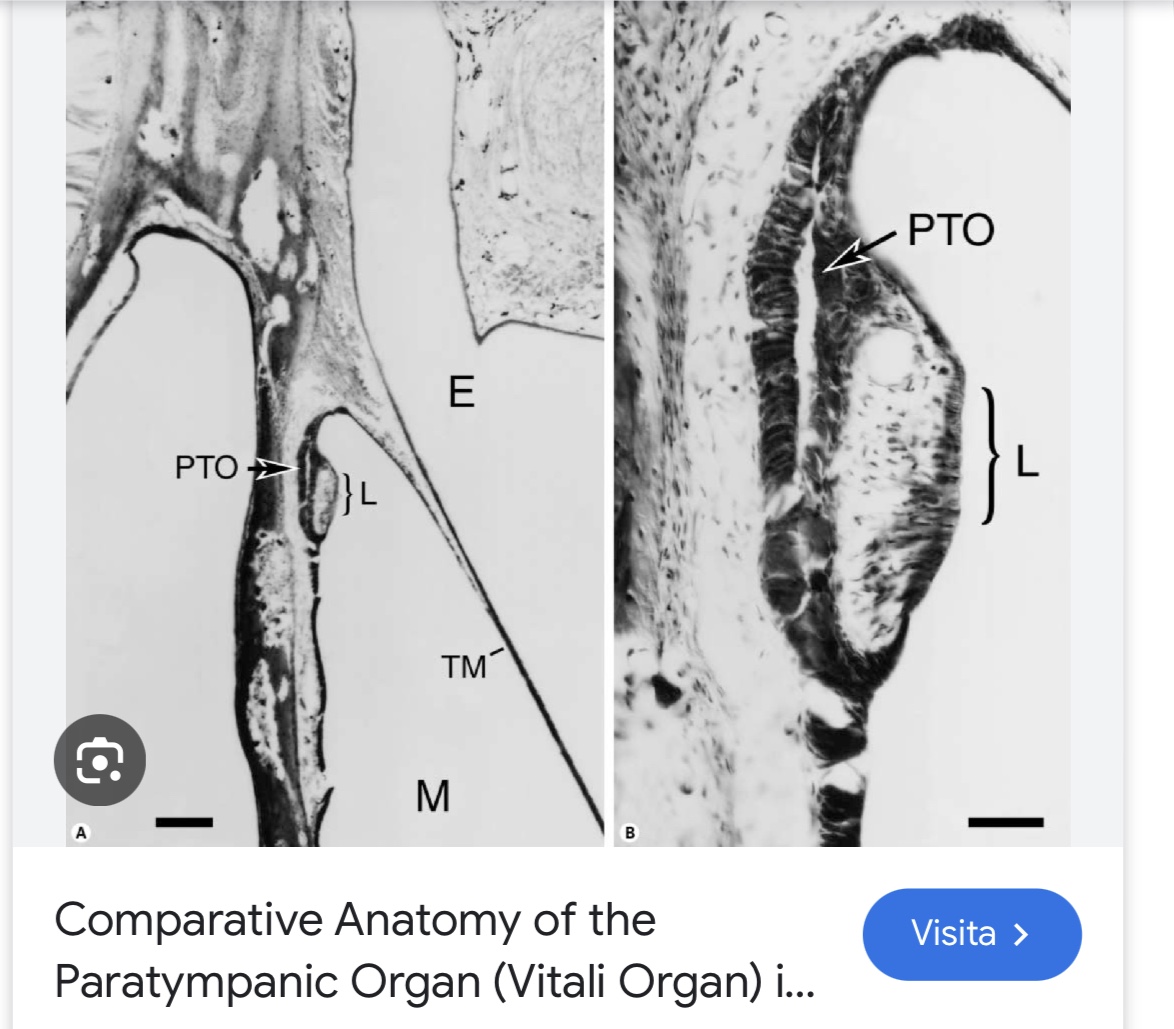
- La Pressione Atmosferica (PA) agisce su una superficie terrestre più o meno vasta, ed in questo spazio anche parcellarmente sul PTO di ogni singolo Colombaccio.
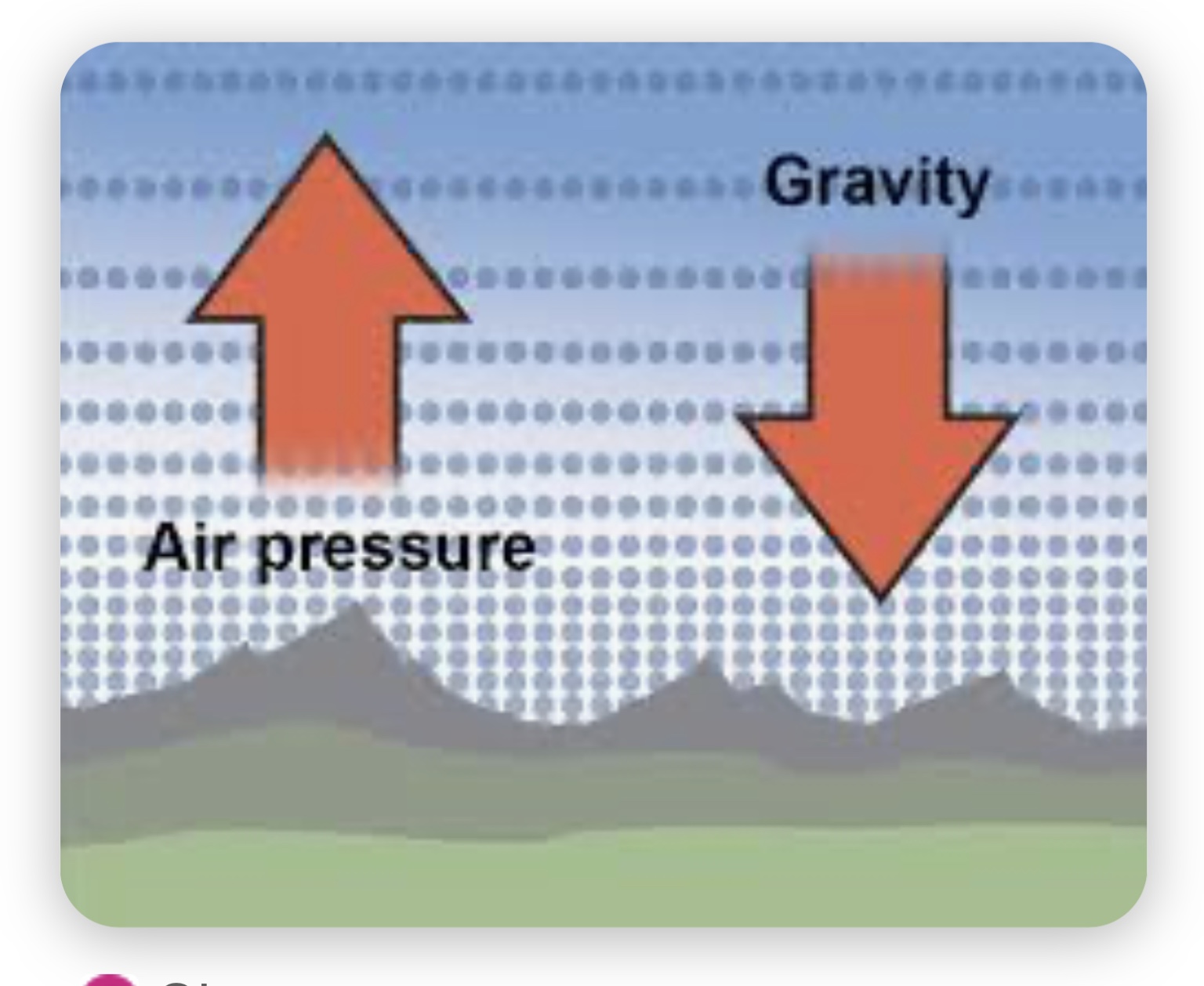


- La PA agisce su tutti i Colombacci, sia posati sia in volo.

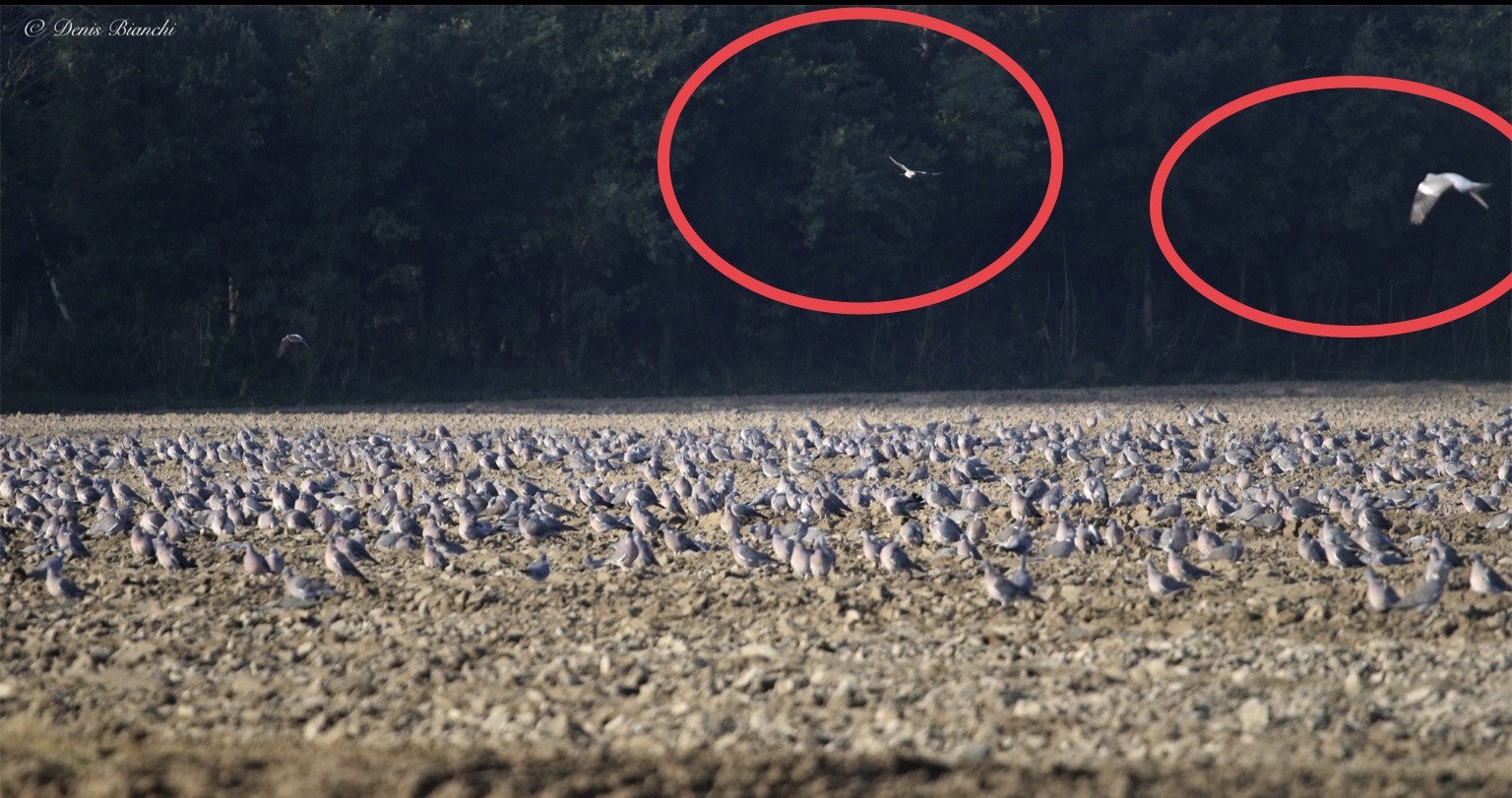
- La PA agisce sul rivestimento interno della cavità cistica (dentro c’è un liquido vischioso) rivestita da cellule con ciglia (hair cell) che funzionano come sensori registrando la forza della PA ed elabora lo stimolo trasferendolo alle fibre nervose alla base delle Cellule. Ogni singola ciglia funziona come sensore.

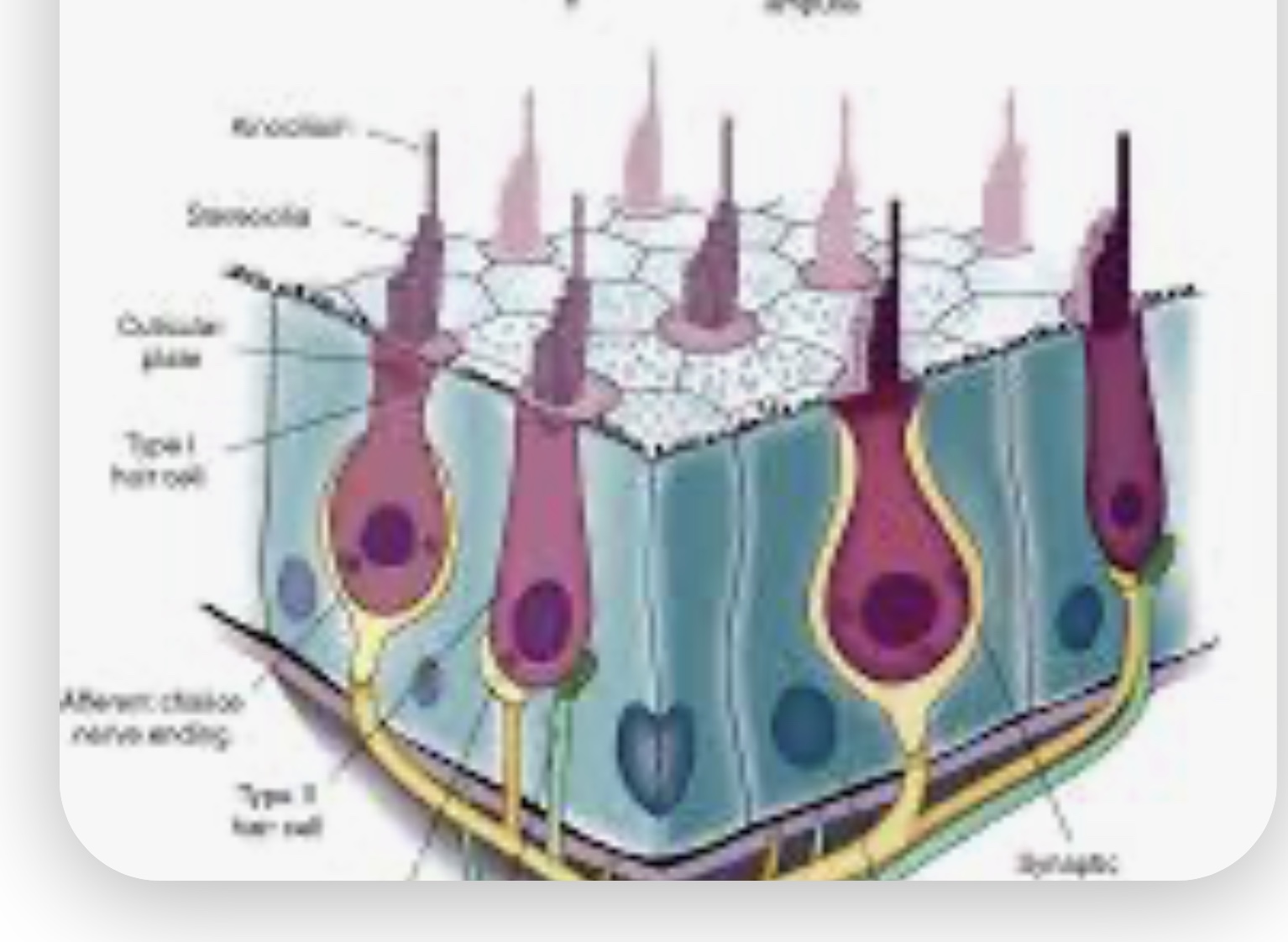

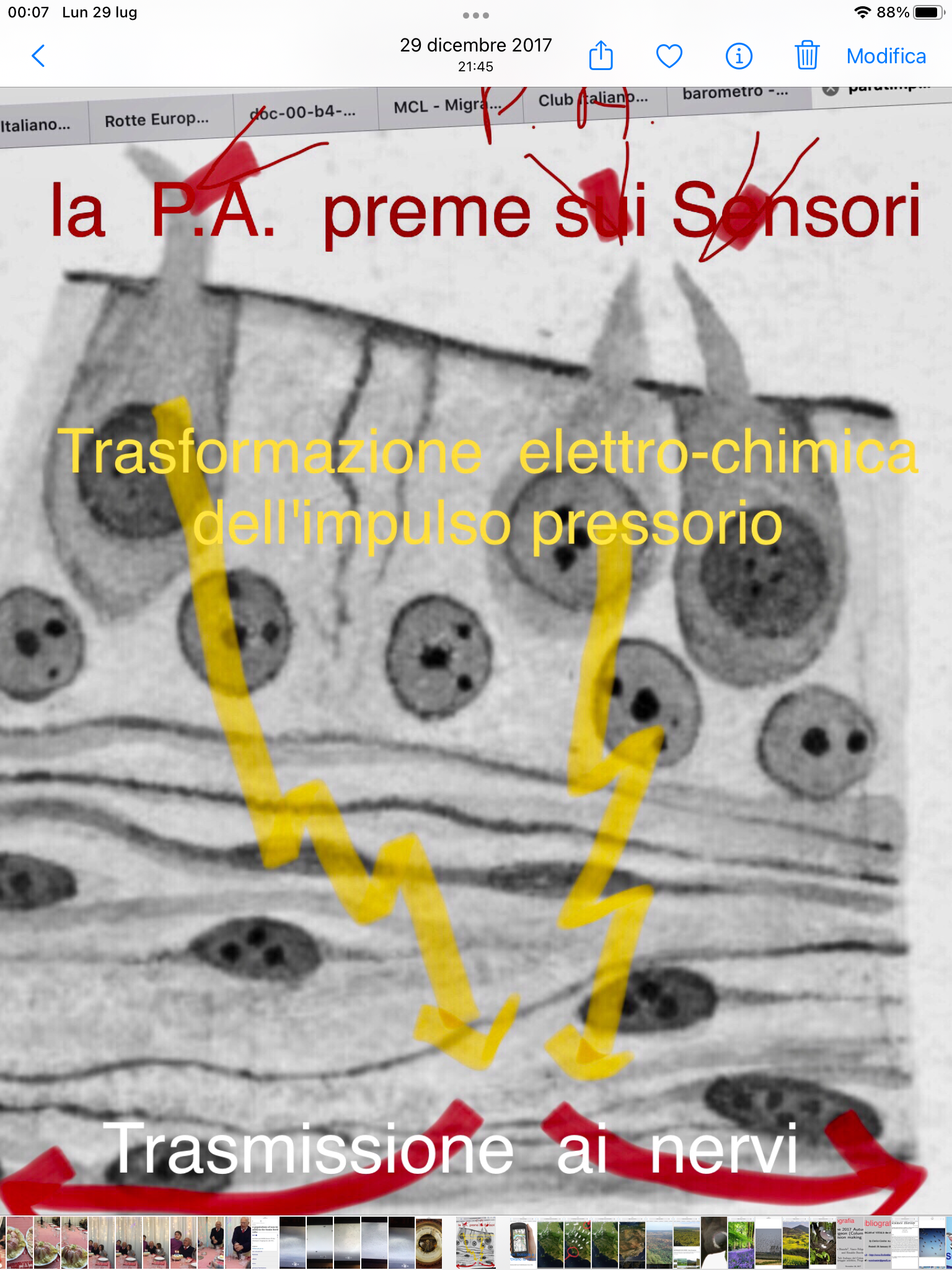
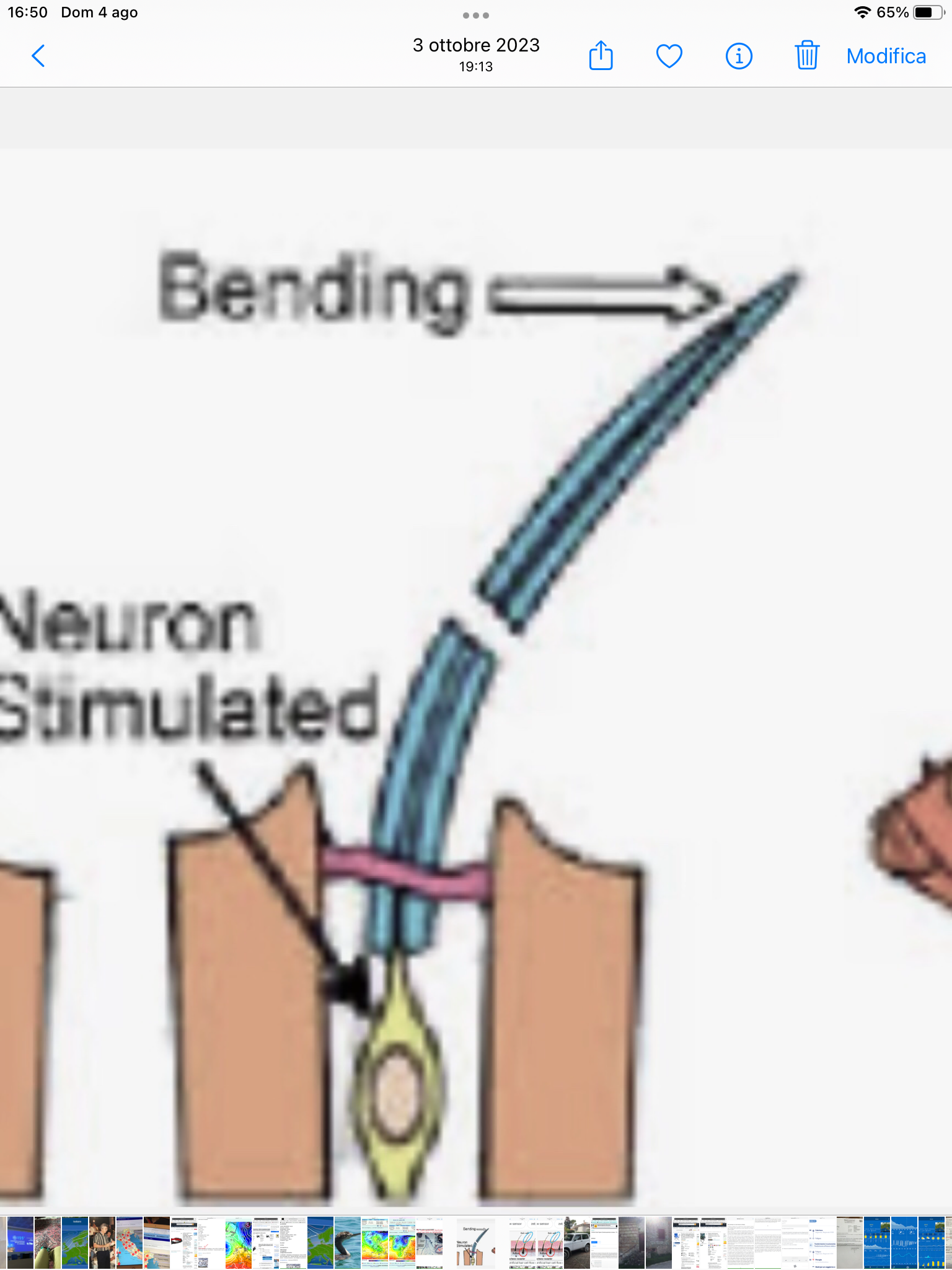
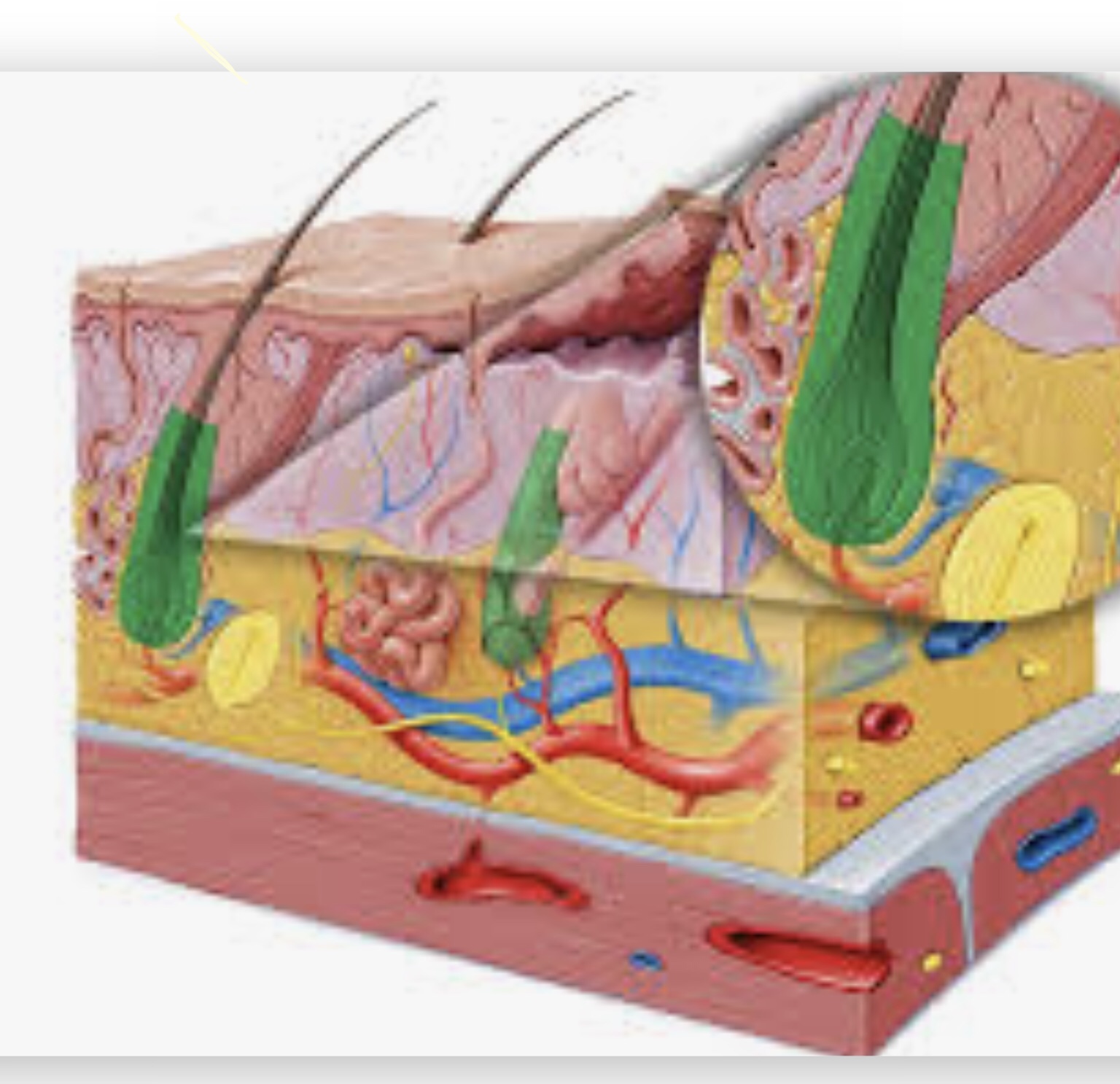
- E quindi su migliaia e migliaia di Colombacci pronti a migrare, su milioni e milioni di ultramicroscopiche ciglia la forza della PA elabora (polarizzazione e depolarizzazione e fenomenologia elettrochimica tessutale) lo stimolo da tramettere ai centri nervosi: lo starter da il via e scatta il volo migratorio di massa mentre si attivano tutte le componenti dell’orecchio interno che coordinano l’orientamento.



- Lo stimolo derivato dalla PA che ha agito sulle ciglia del PTO viaggia verso i Centri nervosi dai quali partono i comandi per i muscoli del volo e quindi la scelta di corridoi aerei virtuali isobarici dove si realizzano anche le forze dei venti. Il barometro biologico guida la scelta di migrare – in condizioni di Alta Pressione e di stabilità atmosferica – per superare con minimo sforzo gli ostacoli e giungere poi ai territori di svernamento come Sardegna ed Estremadura.
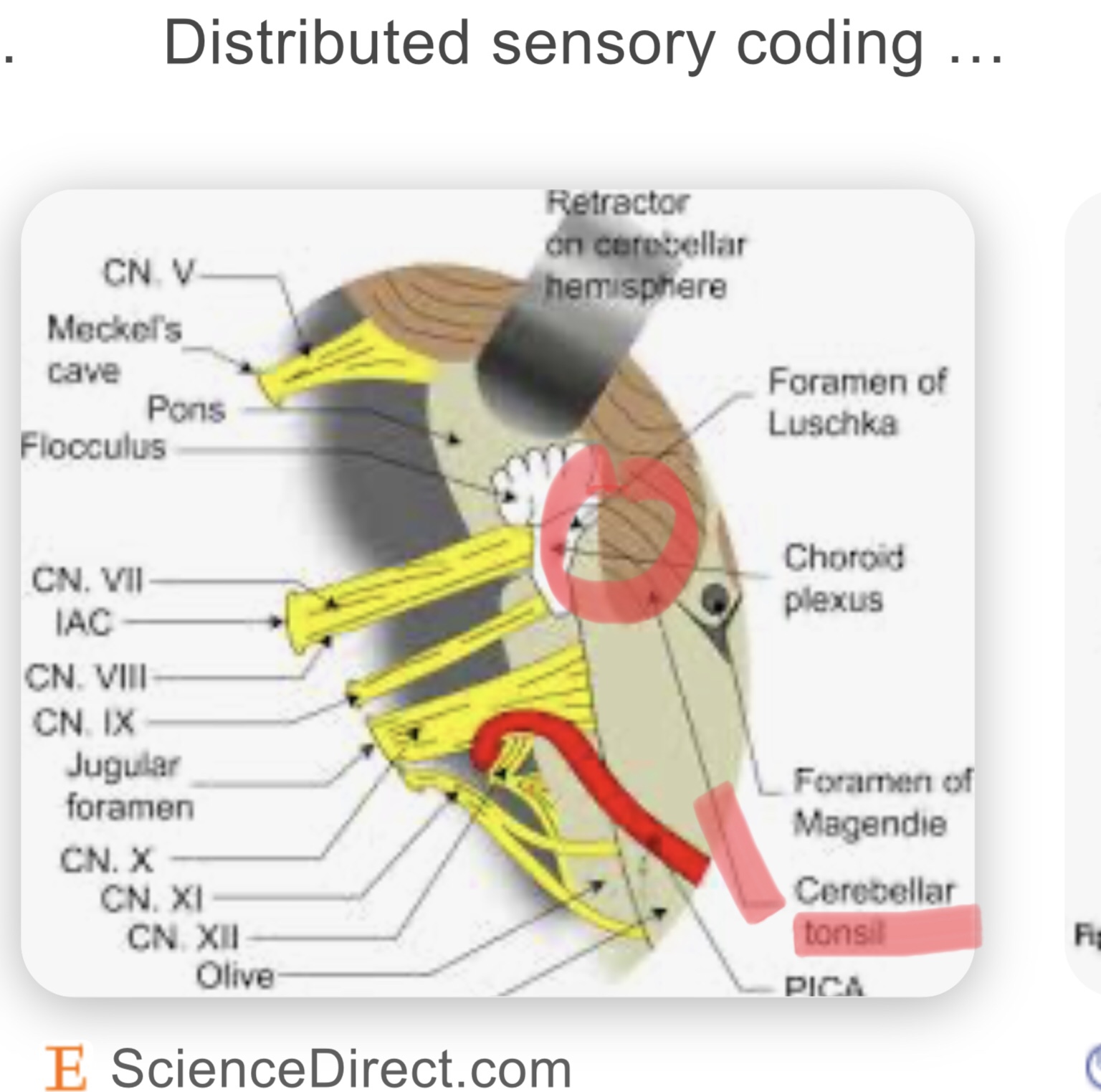


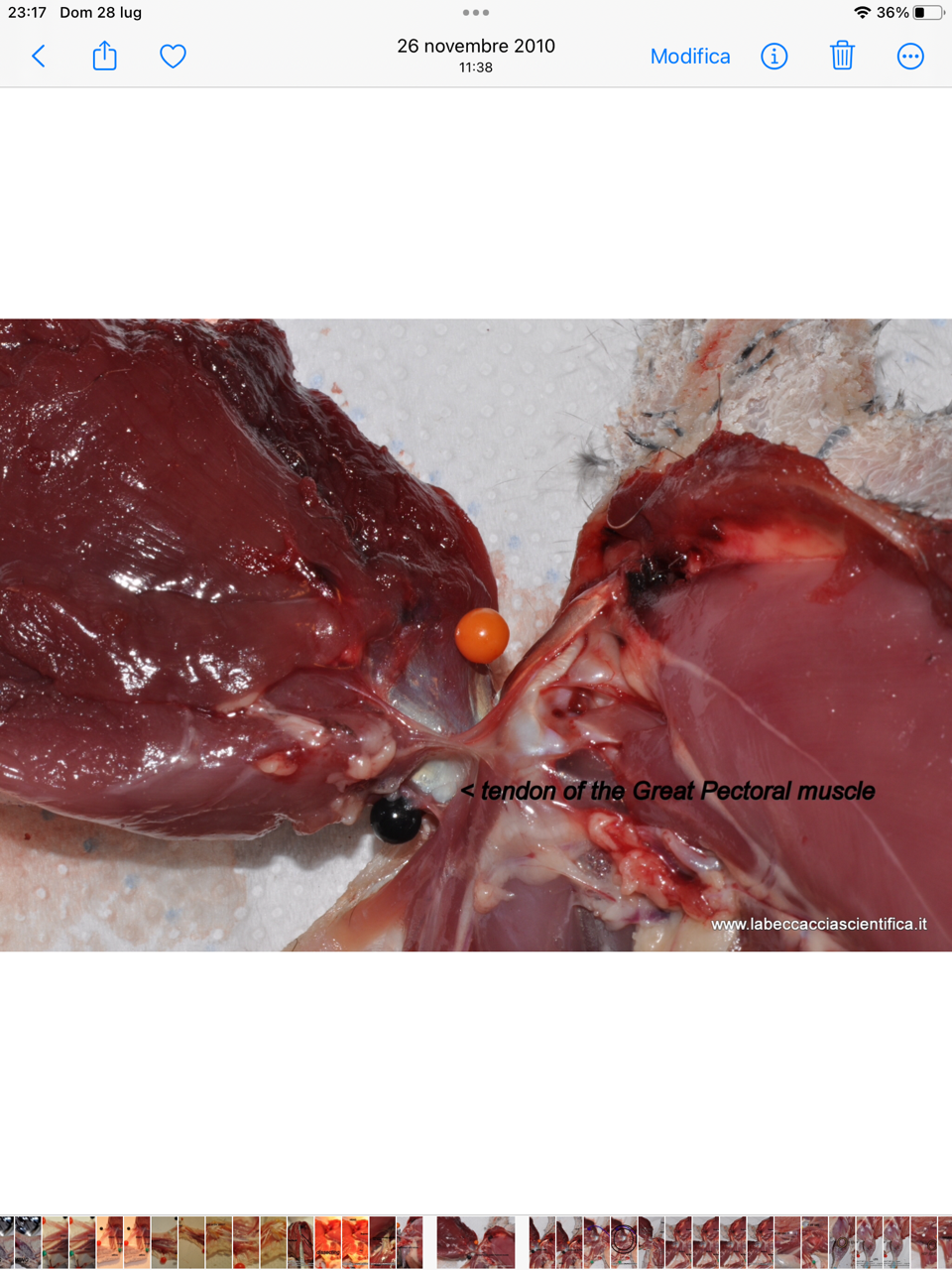

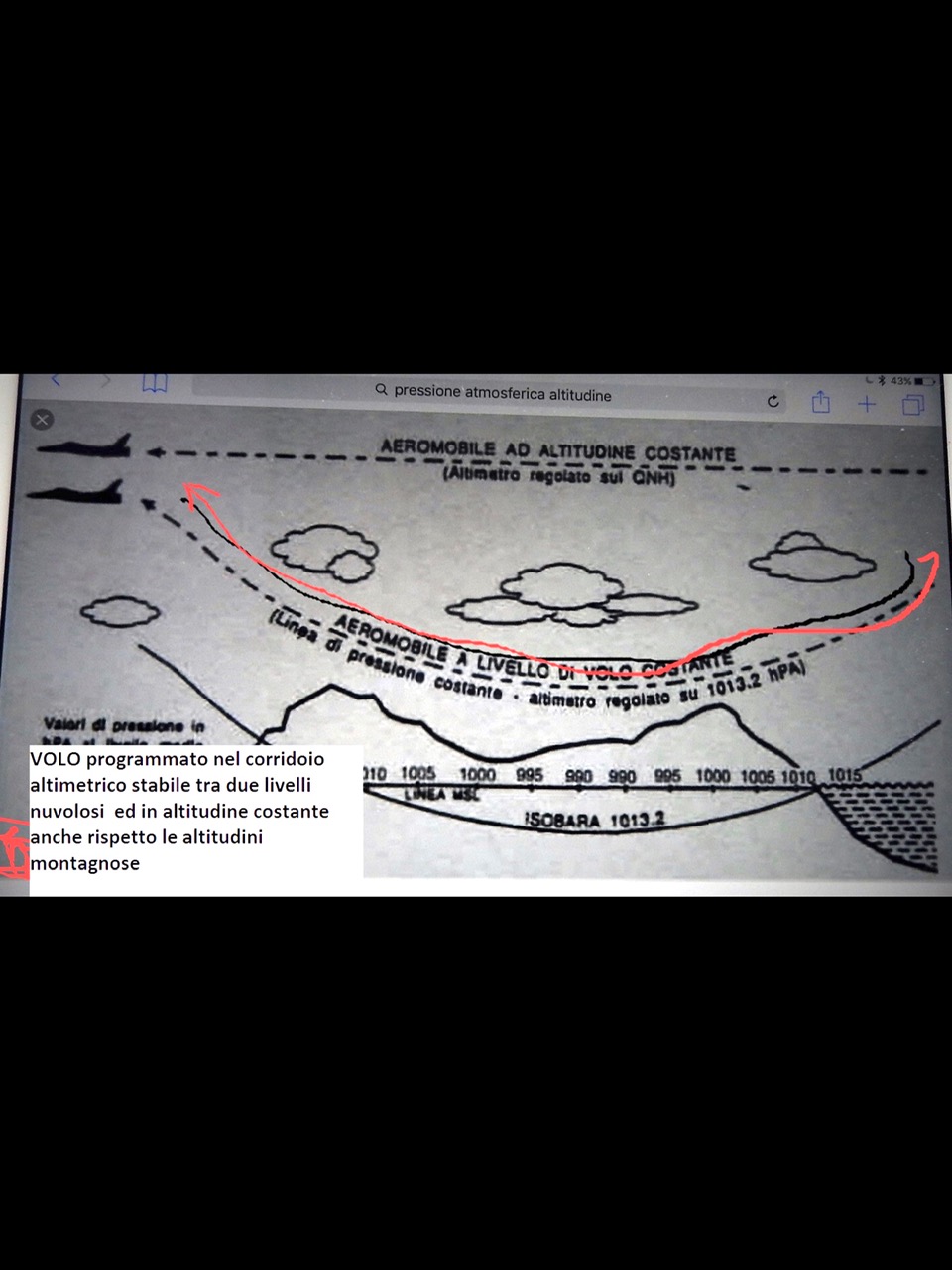

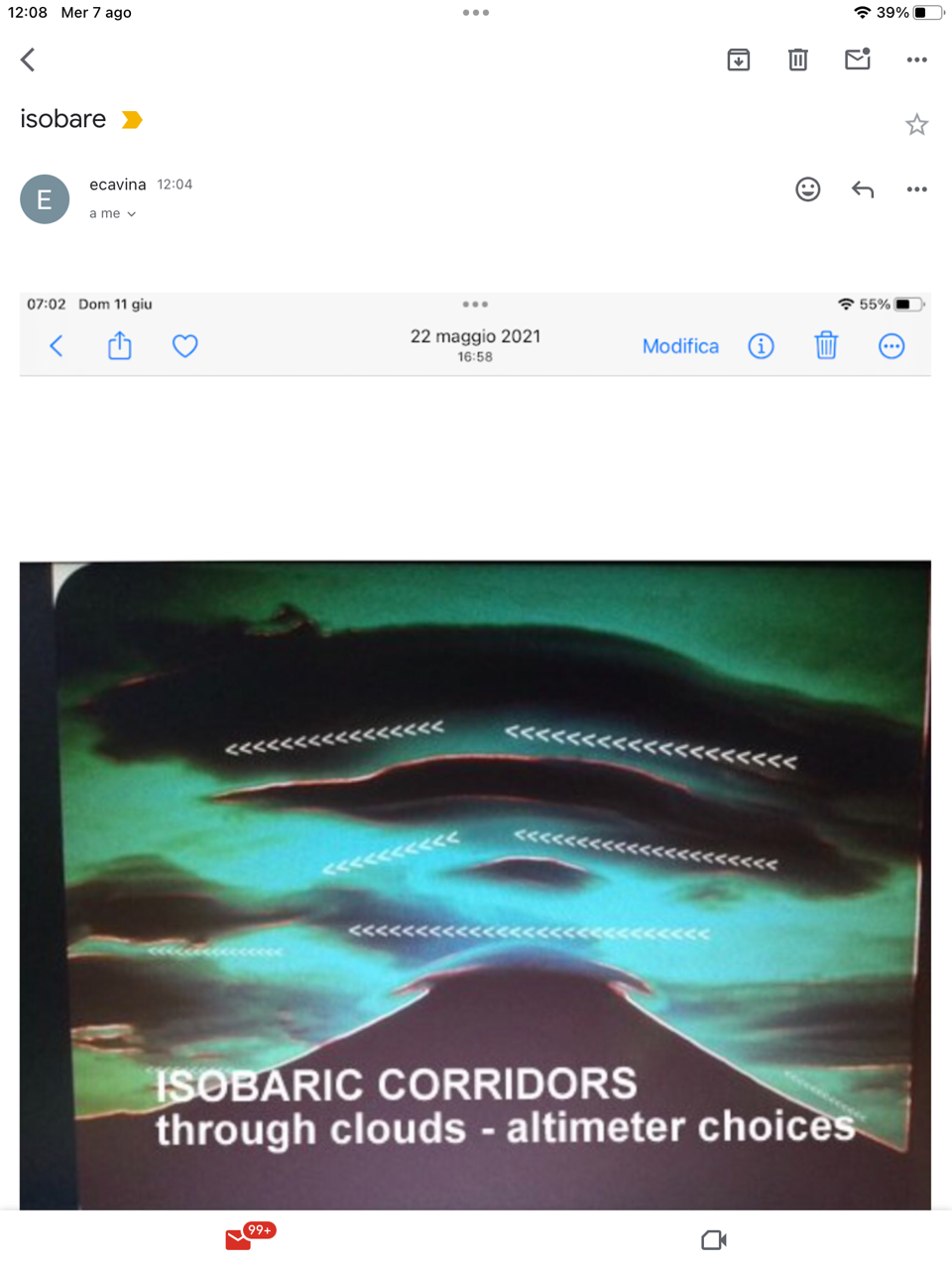
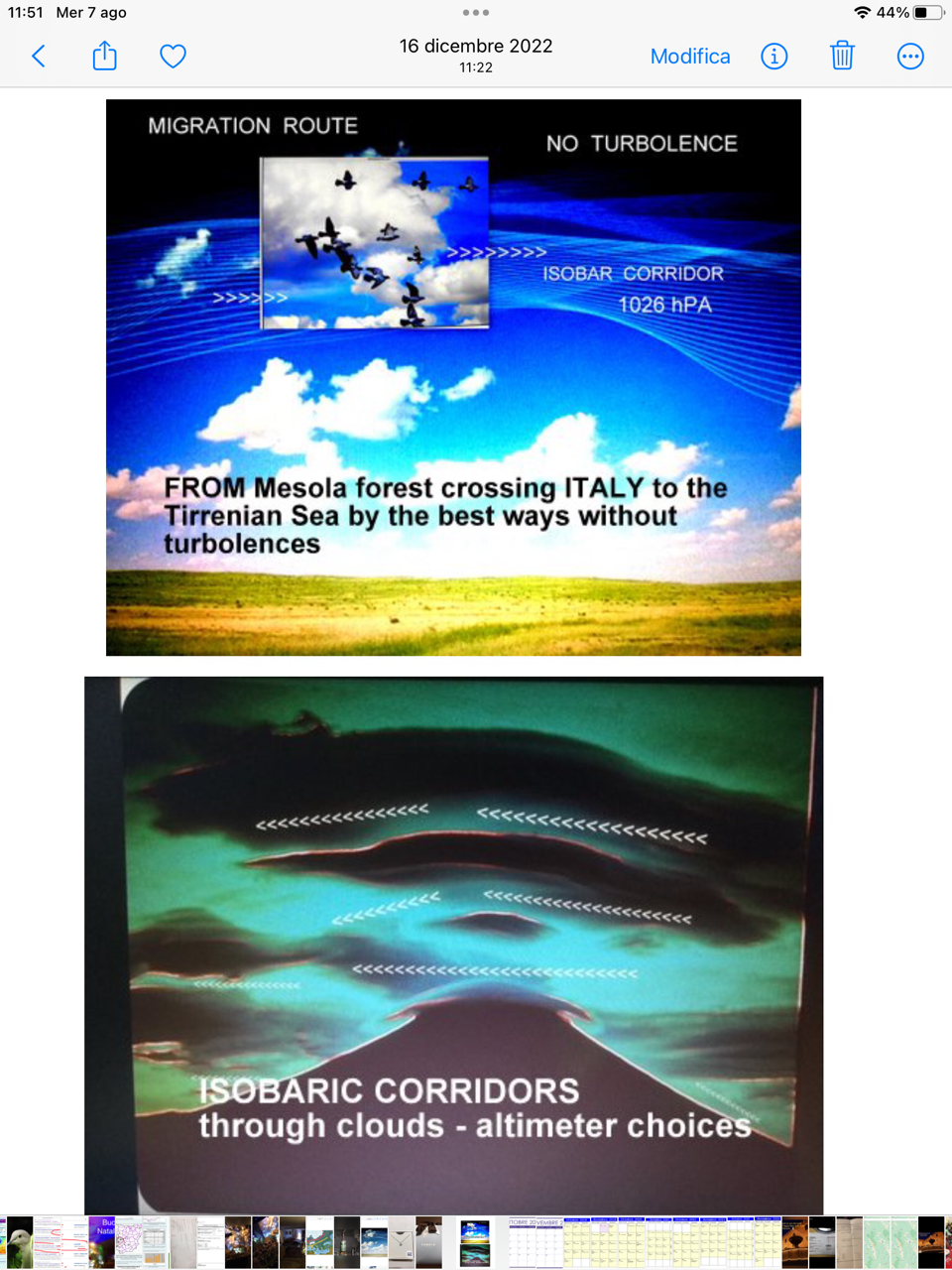
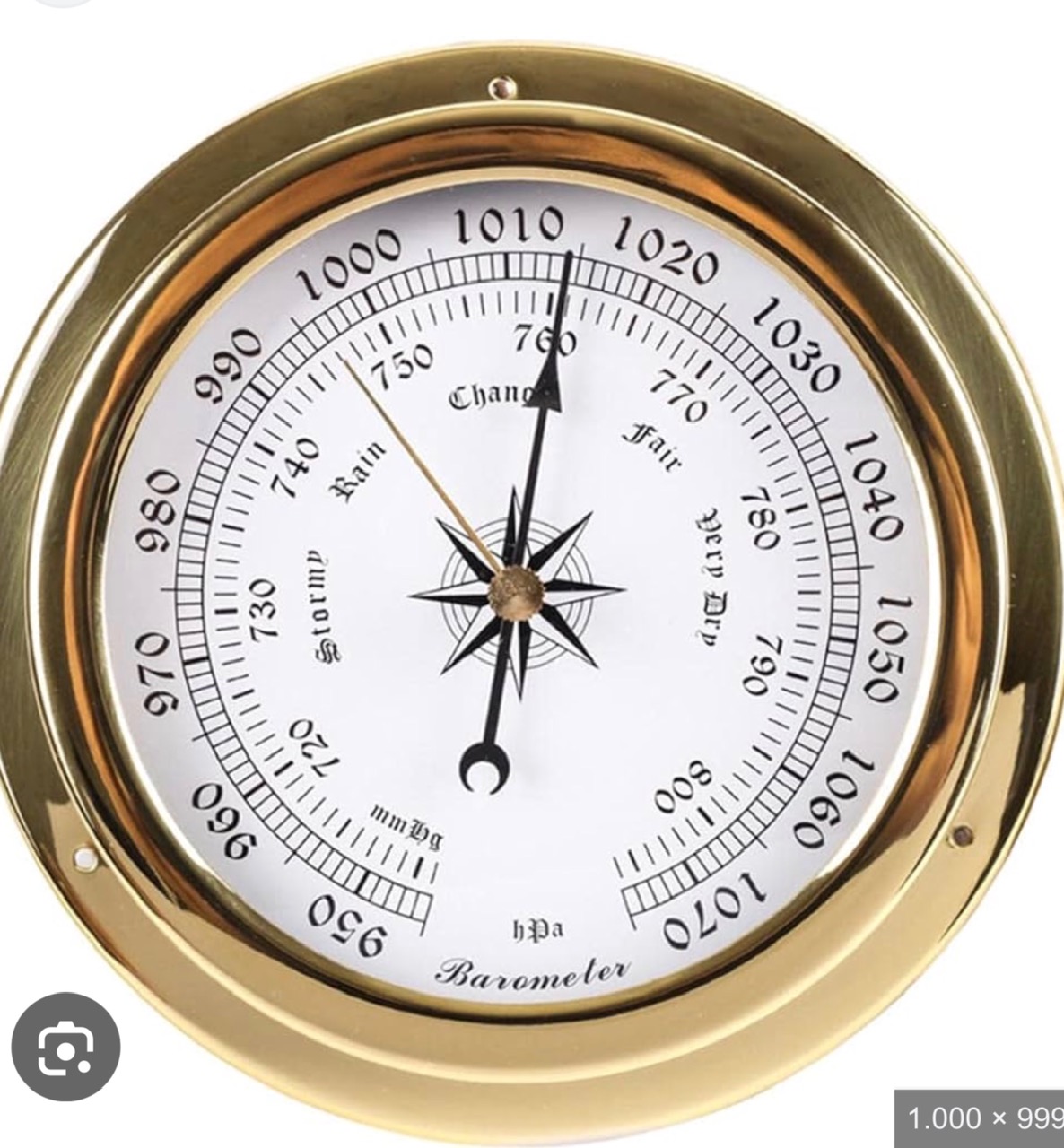
- E quindi i grandi voli – guidati dalla sensibilità sensoriale di miliardi di piccole ciglia o vibrisse integrate nel complesso ecosistema migratorio a atomo-sensoriale – scelgono i grandi e piccoli canali isobarici per giungere ai quartieri di svernamento come il Sardegna ed Estremadura.
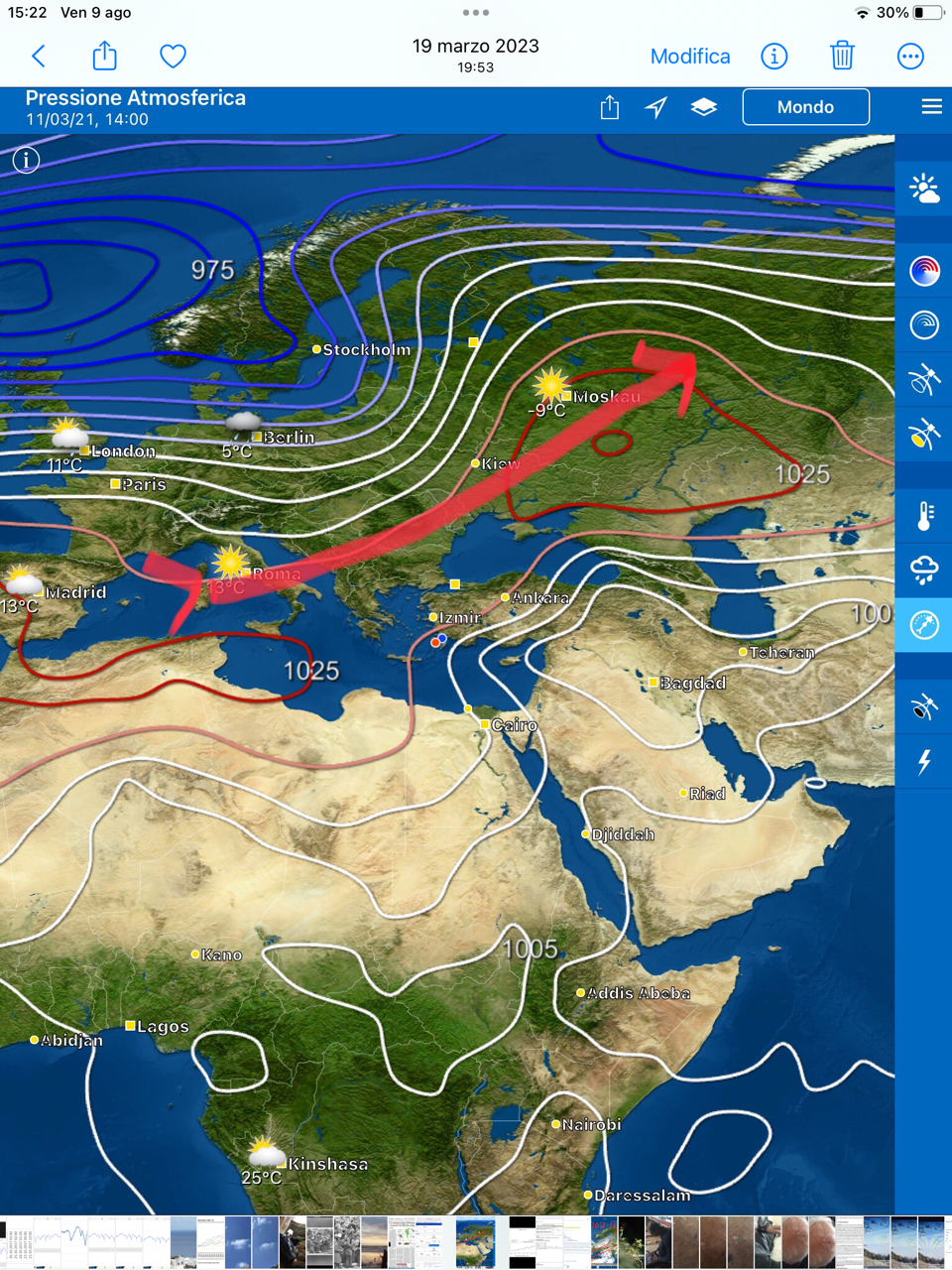





- Ancora oggi dal 1994 rimane valido il Lavoro di von Bartheld:

